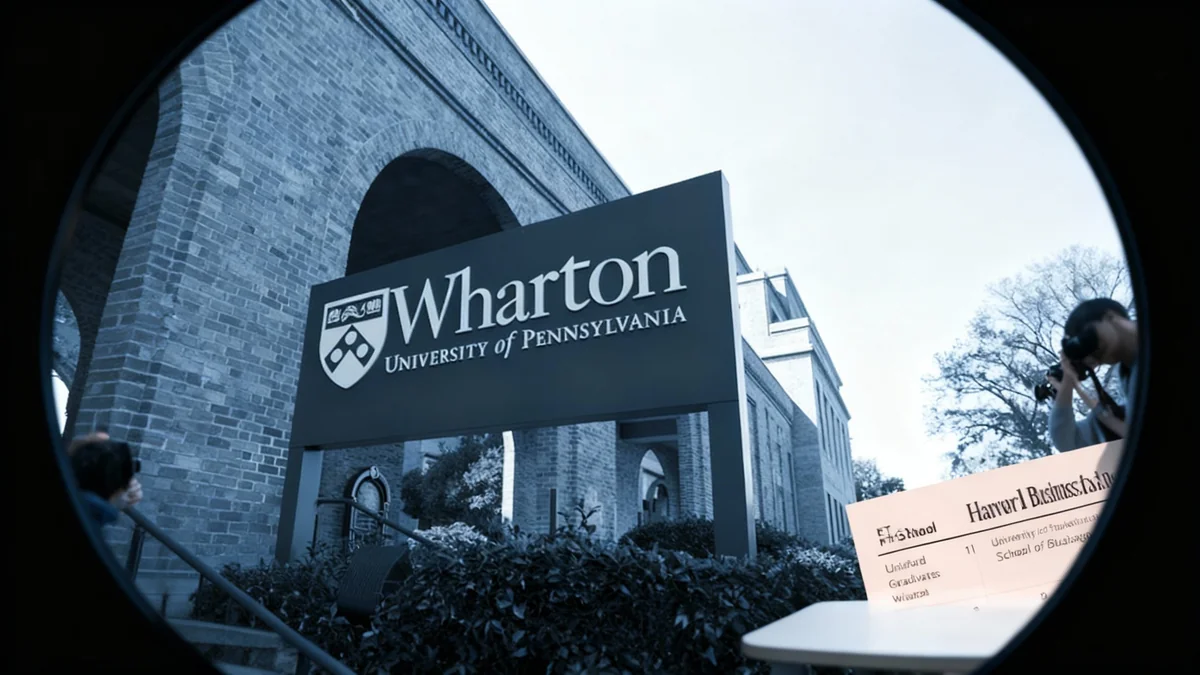Recent job reductions at Indiana University are creating a significant economic strain on the city of Bloomington, according to a local economist. The university's difficulties are contributing to falling wages and sluggish job growth, painting a challenging picture for the Southern Indiana region.
Phil Powell, executive director of the Indiana Business Research Center at IU’s Kelley School of Business, delivered a stark assessment of the situation. He highlighted that the university's internal struggles are having a direct and negative impact on the broader local economy.
Key Takeaways
- Job reductions at Indiana University are negatively impacting the Bloomington economy.
- An expert from IU's Kelley School of Business described the economic news as "rough."
- Key economic indicators, including local wages and job growth, are showing signs of weakness.
- The situation highlights the deep economic connection between a major university and its host city.
A Sobering Economic Assessment
The health of Indiana University is intrinsically linked to the economic vitality of Bloomington. When the university faces challenges, the effects ripple throughout the community. This connection was the central theme of a recent economic analysis.
"Folks, the news is rough," Powell stated, summarizing the current climate. His comments underscore a period of difficulty for an institution that has long been the primary economic engine for the area. The university is not just a place of learning; it is the region's largest employer and a key driver of local commerce.
"Folks, the news is rough."
– Phil Powell, Indiana Business Research Center
The recent job reductions, prompted by pressures within the higher education sector, are the primary cause of this downturn. These cuts have a cascading effect, reducing the overall income flowing into the local economy and dampening consumer spending.
The Ripple Effect of University Job Cuts
The impact of job losses at a major institution like Indiana University extends far beyond the campus grounds. Every position eliminated means less money spent at local restaurants, grocery stores, and small businesses. This creates a domino effect that can slow the entire regional economy.
Understanding a 'College Town' Economy
Cities like Bloomington are often referred to as "college towns" because their economic fortunes are heavily tied to a university. The university is typically the largest employer, and its students and staff form a massive consumer base. This makes the local economy highly sensitive to the university's budget, enrollment numbers, and employment levels.
Economists point to three primary areas of concern stemming from the university's current situation:
- Falling Wages: With fewer high-paying university jobs available and increased competition in the labor market, the average wage in the area is declining. This reduces the purchasing power of residents.
- Lackluster Job Sector: The loss of stable university employment is not being offset by growth in other sectors. This leads to a stagnant or shrinking job market, making it harder for residents to find work.
- Slow Overall Growth: When wages fall and jobs are scarce, the overall economic output of the region, or Gross Domestic Product (GDP), grows very slowly, if at all. This indicates a period of economic stagnation.
A Direct Link to Community Prosperity
The struggles at the university translate directly into challenges for the Bloomington community. A reduction in the university workforce can lead to a softer housing market, lower retail sales, and decreased demand for local services. For a city whose identity and economy are so closely woven with its university, these are significant hurdles.
The current economic drag is a reminder of this codependent relationship. While the university has been a source of stability and growth for decades, its present difficulties are now a source of economic anxiety for the entire region.
The University's Economic Footprint
While specific numbers for the recent downturn are still being analyzed, major universities typically have a massive economic impact. For every dollar a university spends, it can generate several more dollars in economic activity for the local community through a phenomenon known as the "multiplier effect." Job cuts reverse this positive cycle.
Navigating a Challenging Period
The analysis presented by Powell suggests that Bloomington is entering a period of economic adjustment. The challenges facing Indiana University are part of a broader trend affecting higher education across the country, including changing demographics, shifts in funding models, and evolving student demands.
As the university works to navigate its internal pressures, the Bloomington community will need to monitor the economic indicators closely. The path forward will likely require collaboration between university leadership, city officials, and local business owners to mitigate the negative impacts and explore new avenues for economic growth.
The current situation serves as a critical case study in the economics of higher education. It demonstrates that the well-being of a university is not an isolated issue but a cornerstone of community prosperity. The challenges at Indiana University are, therefore, a community-wide concern that will shape the economic landscape of Southern Indiana for the foreseeable future.





